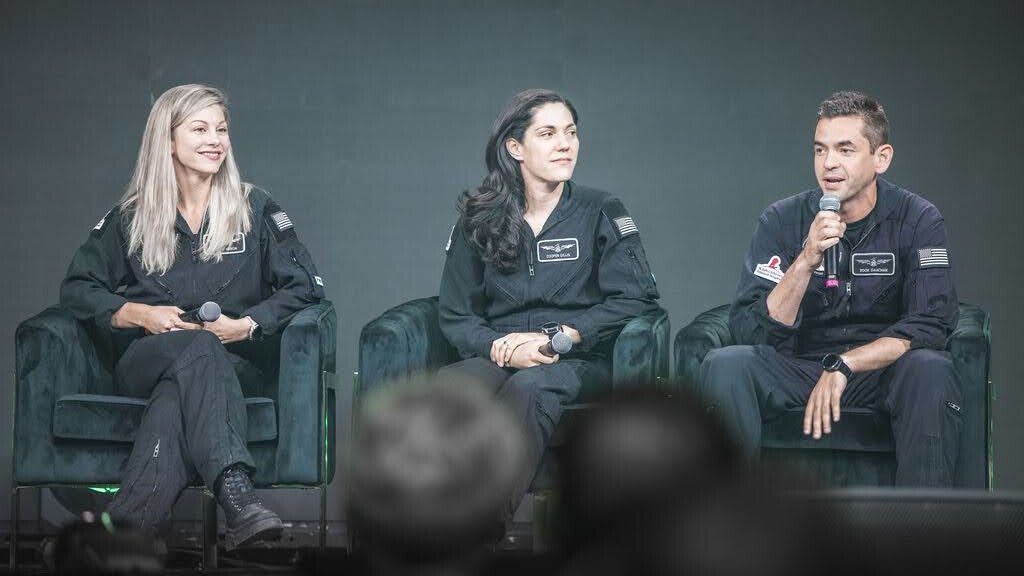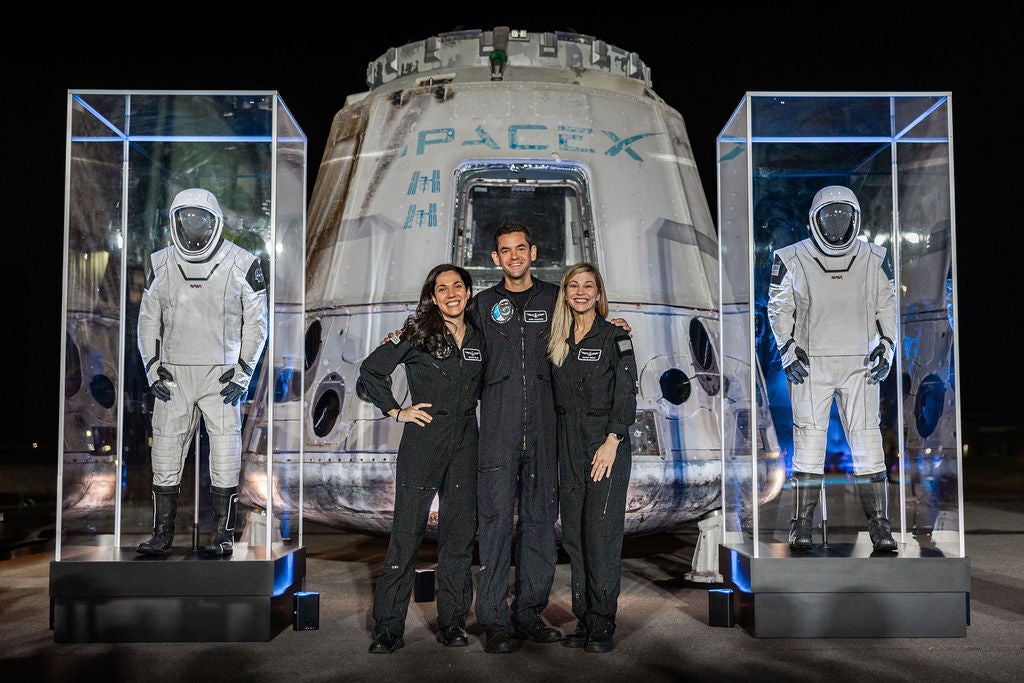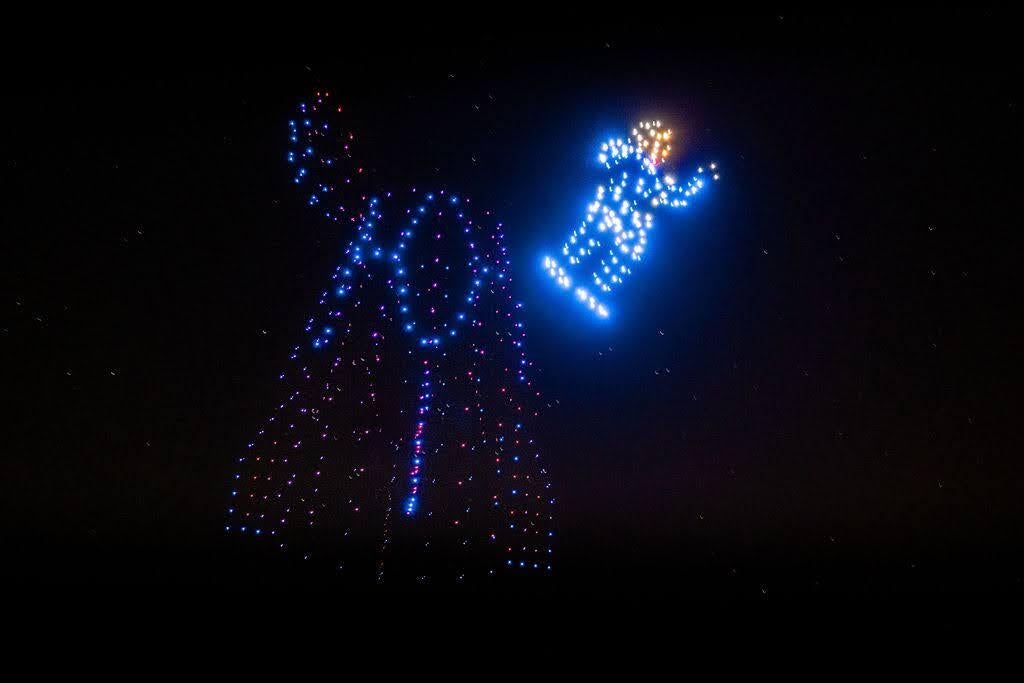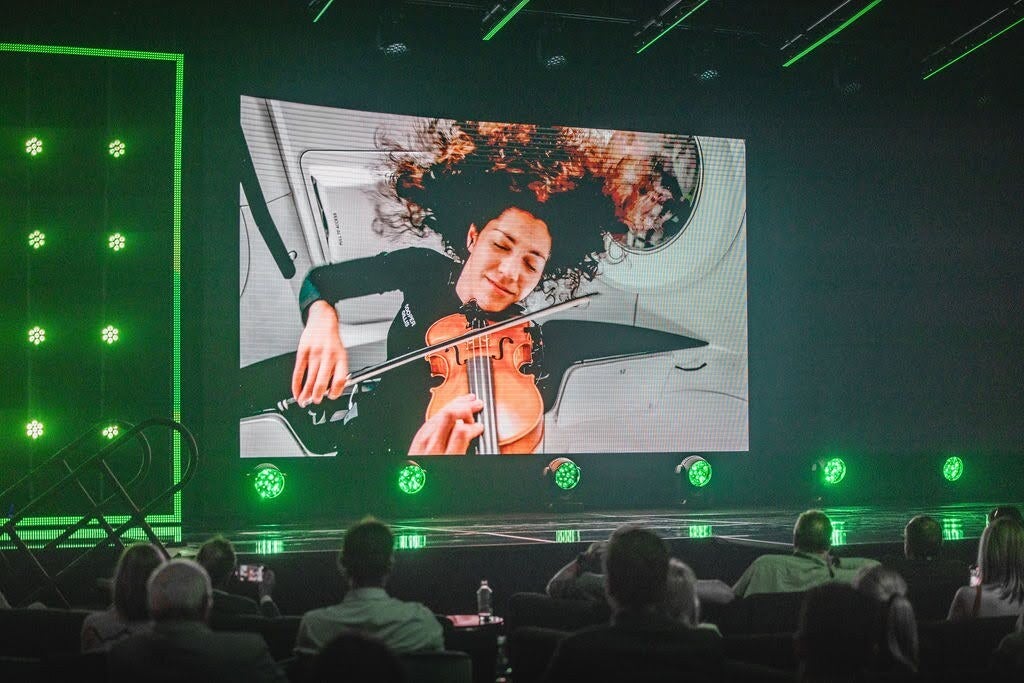
Polaris Dawn crewmembers (from left) Anna Menon, Sarah Gillis, and Jared Isaacman speak on a panel during the 2024 UP.Summit in Bentonville, Arkansas. Credit: UP.Summit
BENTONVILLE, Arkansas — The first private spacewalk, an on-orbit symphonic performance, and nearly 40 scientific research experiments. Those were just a few highlights of September’s Polaris Dawn mission: a five-day, four-person orbital spaceflight purchased from SpaceX and commanded by Jared Isaacman, the billionaire CEO of Shift4 Payments.
But Isaacman — now a SpaceX “frequent flier” after also taking part in 2021’s Inspiration4 mission, the first spaceflight with an all-private crew — is just getting started.
“If we actually believe in the future that SpaceX is trying to create — where tens of thousands of people can be in space, on the Moon, walking around on Mars — these kinds of capabilities have to exist within commercial industry,” Isaacman told FLYING at the 2024 UP.Summit.

Polaris Dawn was the first of three missions under Isaacman’s Polaris Program. The final mission, which does not yet have a target date, is expected to be the first crewed flight of SpaceX’s Starship: the most powerful rocket ever built and the vehicle CEO Elon Musk believes will help humans settle Mars.
Isaacman and crewmates Sarah Gillis and Anna Menon, the first SpaceX employees to actually fly to space, sat down with FLYING for a mission debrief to highlight their favorite moments from Polaris Dawn — and talk about what comes next.
No days off
From the moment they lifted off from Launch Complex 39A at NASA’s Kennedy Space Center in Florida, secured in a SpaceX Dragon capsule strapped to a Falcon 9 rocket, the Polaris Dawn crew got to work.
On the first day of the mission, for example, the crew reached an orbital apogee of 870 miles (1,400 kilometers) — three times higher than the International Space Station and the farthest humans have traveled from Earth since the Apollo era. Gillis and Menon now share the record for the furthest distance traveled from Earth by a woman.
At that altitude, the crew passed through the Van Allen radiation belts, a treacherous environment for humans. It conducted research that will help scientists better understand how to protect astronauts flying through that region.
“There’s micrometeoroid and debris that’s out there. A little millimeter piece of aluminum traveling at 8 kilometers [5 miles] a second will shred just about everything,” Isaacman said during a panel discussion at UP.Summit. “It’s a scary prospect. But we’ve got to travel through that if we’re going to get to the Moon and Mars.”
Isaacman’s favorite moment of the mission, however, was the spacewalk he and Gillis performed. It was the first time private astronauts ventured outside a spacecraft. And because the Dragon capsule lacks an airlock, it was also the first time four astronauts were simultaneously exposed to the vacuum of space.
“That moment when Jared opened the hatch and there was the black beauty of space outside the hatch was a moment full of sensation, full of the awe that that evoked, as well as a cold rushing over your body,” Menon said. “It’s a full-body experience.”
Traveling at 17,500 mph (28,200 km/h) at an orbital altitude north of 450 miles (720 km), the astronauts were protected by SpaceX’s extravehicular activity (EVA) space suits, which were specially designed for Polaris Dawn. The goal of the spacewalk was to perform mobility testing on the suits — a relatively simple objective compared to previous EVAs.
“The difference is — and this is so important — is all of those had the entire weight and resources of world superpowers behind them,” Isaacman said.
NASA’s budget peaked in the 1960s, when it was about 4.5 percent of the U.S. gross domestic product (GDP).
For Gillis, a classically trained violinist, the highlight was her on-orbit performance of “Rey’s Theme” from the Star Wars franchise. Incredibly, Gillis said she had no prior practice playing in microgravity, where pushing on the violin’s fingerboard can move the entire instrument. She used a quarter-sized bow for greater control.
“It was three crewmembers in front of me with this tangle of cables, and the chaos of them trying to get the right angle as they’re floating away, and I’m floating away,” Gillis said. “It was just this total joy to try and record that.”
The performance, organized in partnership with St. Jude Children’s Research Hospital and El Sistema USA, was a charitable effort to raise awareness and funding for cancer research and access to music education. But it was also a demonstration of SpaceX’s Starlink communications system. A Starlink module on Dragon used a beam of light to transmit the footage to another satellite while both were moving at orbital speeds.
How they did it
Polaris Dawn was a private astronaut mission, meaning SpaceX was responsible for preparing the crew. Scott “Kidd” Poteet, the fourth crewmember and a retired U.S. Air Force fighter pilot of two decades, said the training was more intense than anything he has ever experienced.
Gillis, a SpaceX astronaut trainer, said that while the crewmembers brought plenty of experience, combining their strengths was a learning curve. Early on, for example, they struggled through teamwork exercises in a simulator.
“We might have all of this expertise across the four of us, but we utterly failed that sim,” Gillis said. “Just because you have your own expertise doesn’t mean you are yet able to work in a team well.”
Added Menon: “It is really, really neat to see how the team develops together, how they learn to work together, and how they prepare for a mission. And it was really confidence inspiring, and really, to me, a very beautiful part of the development process getting us to launch.”
Isaacman said the training for Polaris Dawn was as special as the mission itself. The astronauts’ preparations took them scuba diving and skydiving, into the cockpit of fighter jets, and even to the top of Mount Cotopaxi in Ecuador. Each day was a new adventure.
“You came in one day and this development suit had a handful of different rotators or joints in it that we were testing out,” Isaacman said, “and then we come back the next week and it would be entirely different.”
In just two and a half years, SpaceX trained the crew, modified Dragon, and developed the EVA suits for Polaris Dawn. To put that into perspective, Menon’s husband, Anil Menon, was selected by NASA for an astronaut mission four days before Menon was picked by SpaceX — but she flew first.
Why it matters
The technology and capabilities demonstrated during Polaris Dawn could alter human spaceflight as we know it.
The spacewalk, for example, was more than a flashy achievement. NASA’s current EVA space suits were designed four decades ago, and suit maintenance has forced the agency to postpone several spacewalks in recent months. Earlier this year, NASA and Collins Aerospace “mutually agreed” to end a $100 million contract that would see Collins deliver new suits by 2026.
NASA could spend billions of dollars on a suit redesign. SpaceX’s EVA suit, meanwhile, is designed to be manufactured at scale for thousands of people to build and explore on Mars, Isaacman said. The suit was designed for Polaris Dawn specifically, “but just like a lot of things that SpaceX works on, the utility is quite broad,” he said, implying that other astronauts will one day wear it.

The Starlink communications system showcased during the mission, meanwhile, could be a tool to ease demand on NASA’s Deep Space Network: an array of giant radio antennas that supports communications in the final frontier.
“We’re even hearing now, just even alleviating the demand over the [U.S. Tracking and Data Relay Satellite System] and ground stations … as being a potential communication path to lunar missions, or potentially even Mars,” Isaacman said.

The altitude record, spacewalk, and symphony performance grabbed most of the Polaris Dawn headlines. But in between those objectives, the crew conducted an array of experiments to study the health of astronauts on long-duration spaceflight.
“There’s a lot of problems we have to solve if we’re going to have thousands of people living and working in space for really long periods of time and going really far from Earth,” said Menon.
For example, crewmembers stuck a device called an endoscope down their noses to image their airways, the first time that has been accomplished in space. They also researched spaceflight associated neuro ocular syndrome (SANS), a condition developed in microgravity that can impair astronauts’ vision. Other experiments focused on motion sickness, which according to Menon affects about 6 in 10 people when they first reach space.
“If you have 100 people in a spacecraft going up at the same time, and 60 of them are vomiting, that’s a big problem.”
— Anna Menon, SpaceX engineer, Polaris Dawn mission specialist and medical officer
“If you have 100 people in a spacecraft going up at the same time, and 60 of them are vomiting, that’s a big problem,” she said.
Data from these experiments will be entered into a database that is accessible to the wider space community, allowing non-SpaceX researchers to learn for years to come.
“If we want to have a future among the stars, if we want to have many people living and working there, we need these solutions,” Gillis said. “We need a new communication system. We need EVA suits so people can actually go and explore the surface of Mars. We need to understand the health implications so by the time we get there, they haven’t lost their vision and they aren’t sick.”
The crew also spent plenty of time studying problems back on Earth.
Isaacman’s Inspiration4 crewmate and St. Jude physician assistant Hayley Arceneaux became the first human to fly to space with a prosthesis after recovering from childhood bone cancer. That mission raised more than a quarter of a billion dollars for the charity, which signed on as a partner for Polaris Dawn.
“You’ll continue to see [St. Jude] play a huge part in all of our missions until their work is done,” Isaacman said.
The astronauts traveled the world visiting hospitals and meeting children, medical professionals, and researchers who helped inform some of their experiments. They installed Starlink connections at many facilities, providing access to the Internet and education. The work was part of St. Jude’s effort to create cancer treatment programs, educate oncologists, and provide access to safe chemotherapy treatment worldwide.
“Right now, depending on where you’re born, you either have an 80 percent chance of survival, or you have a 20 percent chance if you’re not born in the U.S.,” Gillis said. “So [St. Jude has] pioneered extraordinary outcomes for children. But if you aren’t born here, you don’t benefit from that.”
One of the mission’s most special moments was Menon’s on-orbit reading of a children’s book she authored, Kisses from Space, to her two children and St. Jude patients. Proceeds from the book will go to St. Jude, and the charity will auction off the copy that traveled to space.
“It was ultimately the story of the power of love to overcome any distance, and I think, hopefully, sharing space but also sharing human connection and the power of that through this space story,” Menon said. “Reaching kids around the world was a powerful moment.”
What’s next?
Isaacman said the Polaris Dawn crew still has a few weeks of debriefing, and he has yet to fully turn his sights to the next Polaris mission.
“We are still very on-mission,” he said. “We really need to understand everything we got right and could have done better on this one, things we got wrong and certainly could improve upon, before you even get to what’s in the realm of possibility for Mission Two.”
Isaacman couldn’t say much about the next mission. But some time next year, he said, the Polaris team will come together to determine what they can pull off.
For example, SpaceX could improve its EVA suit with added mobility, a portable life support system, or increased pressure, which would eliminate the “pre-breathe” process Polaris astronauts used to remove nitrogen from their bodies before the EVA. Chances are the next mission will feature another spacewalk.
“It would be such a travesty if [SpaceX] didn’t take what they learned and take another giant leap in a good direction,” Isaacman said. “So I would fully expect EVAs are on the horizon for the next go.”
Mission Two will set the stage for the final Polaris mission, which is expected to be the debut crewed flight of SpaceX’s Starship. Both Starship and the Super Heavy booster are designed to be fully reusable, and SpaceX plans to fly them hundreds of times before adding crew. Musk in September said the company could launch uncrewed Starships to Mars within two years.
If SpaceX can successfully validate Starship, it could usher in a new era of private spaceflight. Gillis and Menon, for example, were the first two SpaceX employees to reach the final frontier, but they may not be the last.
“If you have a propulsion engineer, you have the interior engineer, the suit engineer on that spaceship, it makes a lot of sense to bring the expertise with you when you’re going to Mars,” Menon said. “I don’t think I ever thought it would happen this soon — and I definitely didn’t think it would be me.”
Editor’s note: This article first appeared on Flying.

